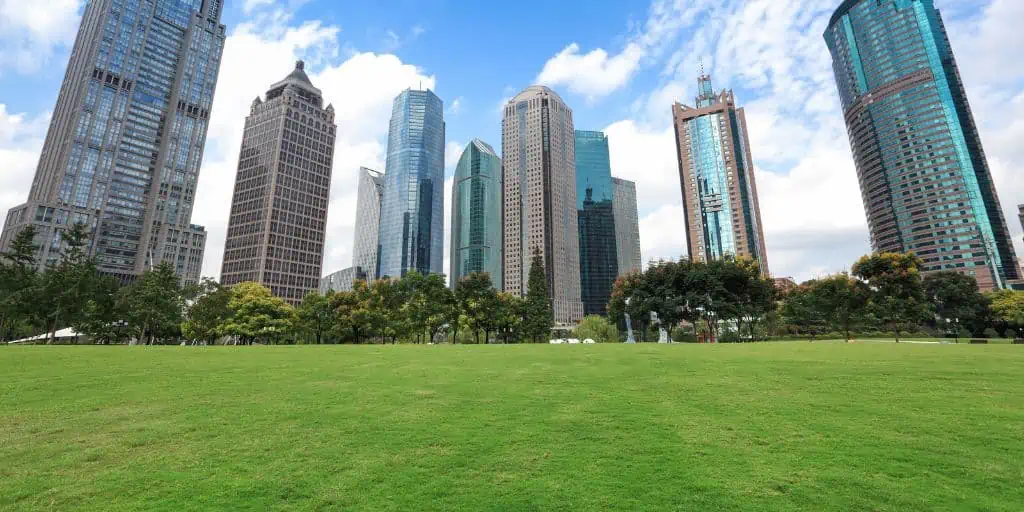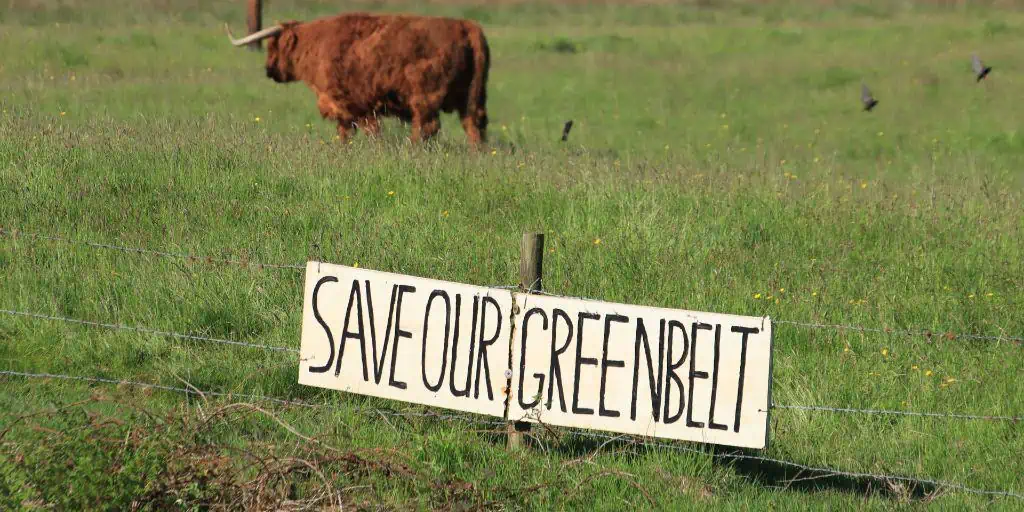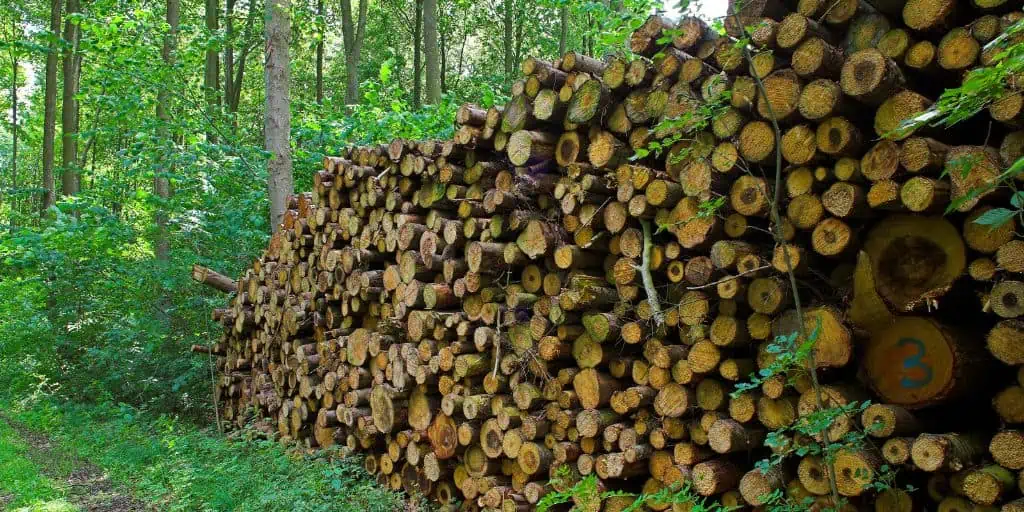What Is a Green Belt?
Shortcuts
- A green belt (also known as greenbelt or greenbelt property) is open, undeveloped land outside urban areas.
- Green belts can be stretches of shrubbery, farms, pastures, meadows, forests, ranches, parks, or any combination of them.
- Green belt rules vary by state, county, city, or town, so local zoning regulations generally dictate where they begin and end.
- Green belts don’t keep areas from growing, but they prevent rampant growth detrimental to the environment.
- Although green belts benefit the environment and improve people’s mental health, they’re not without downsides, as they can hurt local economies and help drive up home prices.
What Does a Green Belt Do?
A green belt prevents unchecked urbanization. Its goal is to avoid disturbing open swaths of agricultural and forest land as much as possible and, in so doing, preserve the ecosystem.
Many studies indicate a healthy mix of rural and urban areas benefits everybody[1]. Moreover, green belts help maintain ecological balance since excessive urban sprawl may affect people’s quality of life[2].
Using green belts forces local governments to be more creative when backing development projects. When urban growth boundaries are in place, policymakers should think of ways to maximize their space.
Green belts also play a role in environmental conservation by maintaining the open or natural condition of land in which wildlife can survive. Greenbelt law is also useful for agricultural activities. While critics argue that agriculture itself contributes to water scarcity[3] and climate change[4], using agricultural green belts is still a net positive for society because it helps preserve ecosystems.
What Is an Example of a Green Belt?
An example of a green belt is raw land, often called open-space land. Vast expanses of scrubland that border urban areas are the epitome of green belts. Not all green belts are wildlands, however.
Green belts can be crop fields for growing food and pastures where farm animals graze. Forests, meadows, ranches, and parks can also fall into the same category.
How Do Local Governments Designate Green Belts?
Local authorities designate green belts either through a zoning or land use designation.
In jurisdictions where green belt rules are enforced, counties and municipalities have an urban growth boundary. These boundaries take different forms, some resembling literal green belts encircling urban areas.
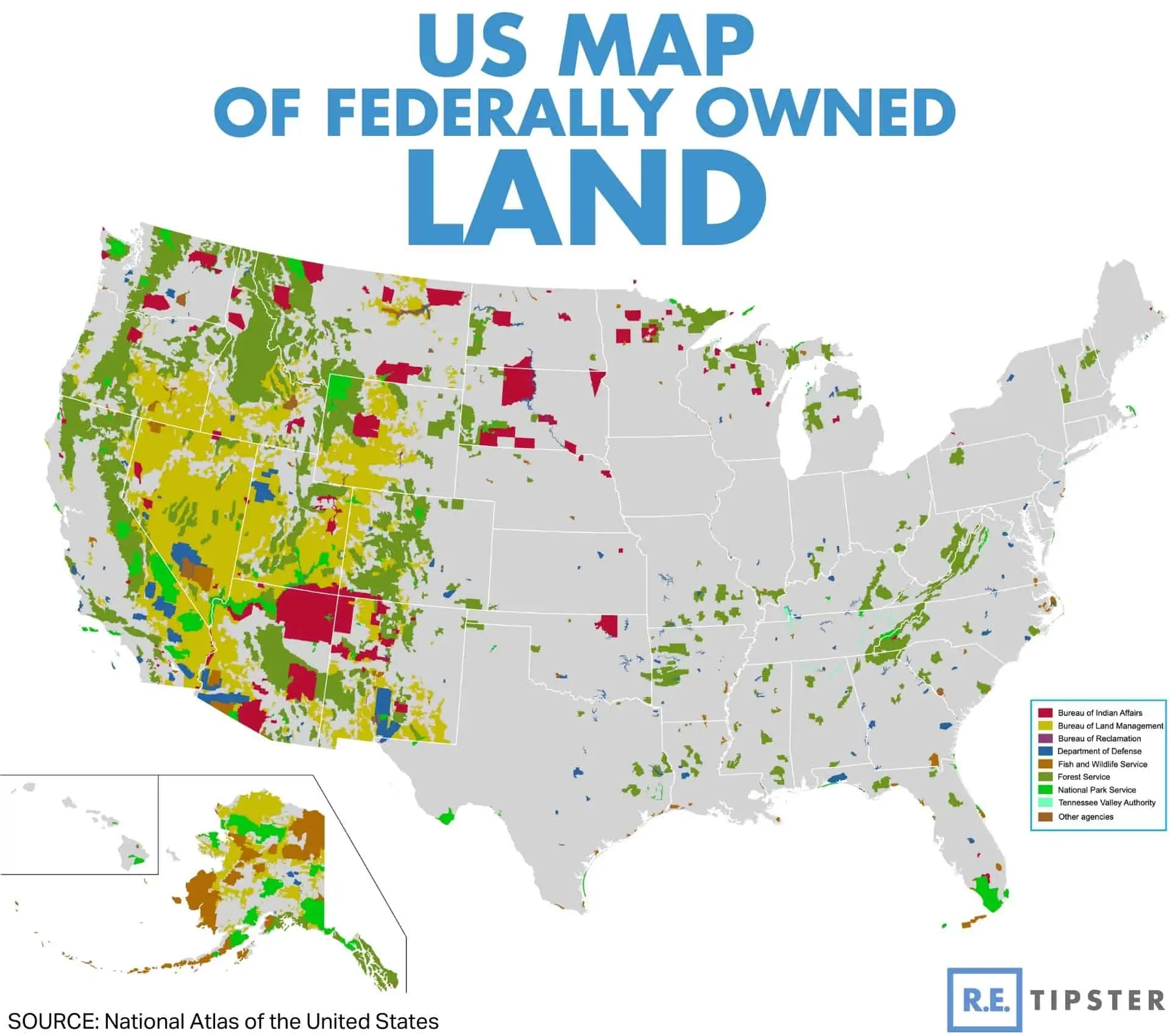
Graphic courtesy of the National Atlas of the United States via Wikipedia
Sometimes, a central authority decides the dimensions of urban growth boundaries. In other cases, a council of local governments governs where and how fast their region should urbanize. Some have even inadvertently created urban growth boundaries due to development restrictions.
Not all states or local governments in America have embraced the concept of a green belt. Examples include the Open-Space Land Act in Virginia and the Williamson Act in California, but the green belt movement is considered more European than anything else. One reason is that critics in the U.S. argue that green belts don’t necessarily have agricultural, ecological, and aesthetic value.
Detractors also mention that green belt proponents are private property owners with a Not In My Backyard (NIMBY) attitude, giving them a vested interest in containing further urbanization.
How Effective Are Green Belts?
Green belts are effective at containing urban sprawl.
For example, European towns implementing green belts have demonstrated slower urban expansion than those without[5].
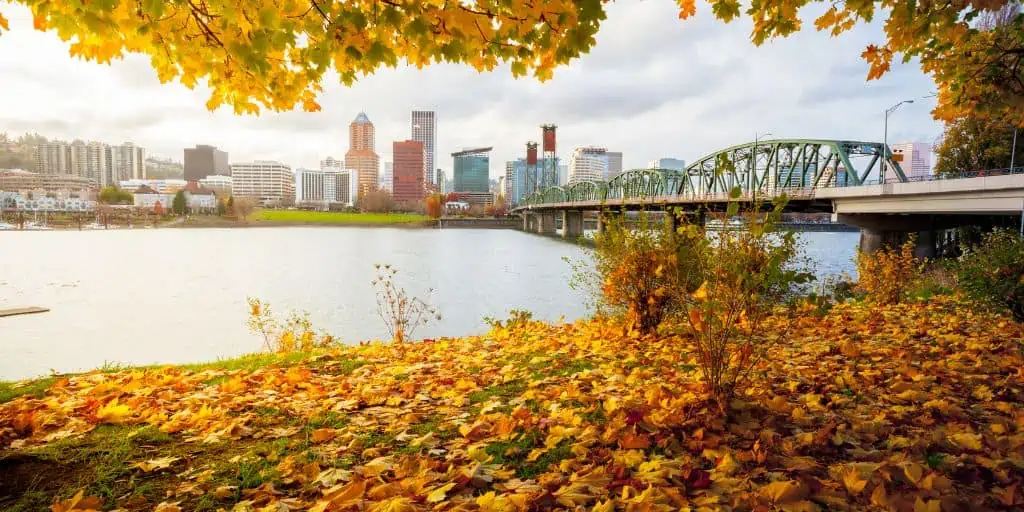
Along Willamette River in Portland, OR
Meanwhile, in the U.S., Portland, Oregon is an interesting case study. Since its inception, the city’s urban growth boundary has increased by only 14% even though its population has ballooned by 60%[6].
Another example is King County in Washington. In the 90s, it converted two-thirds of its land into green belts. It has removed suburbs and limited land uses to urban, rural, and resource. Although its urban growth boundary has changed, only 2% has spilled outside King County[7].
Denver is another city with a green belt program. Between 1997 and 2009, it expanded by 40%. Throughout that time, the local government worked to control urban development in ways that would preserve the hinterland without entirely squelching expansion.
Ironically, green belts can encourage sprawl elsewhere. Policies that block expansion may also deter the creation of more affordable housing, such as prefabricated homes and mobile home parks.
In general, the bigger the city, the more noticeable the impact of green belts. Combining them with denser development initiatives decreases the amount of land an average property owner occupies.
Are Green Belts Good for the Environment?
Green belts are good for the environment on many levels.
They don’t always support local ecosystems since land classified for green belt purposes may still be barren. However, the more fertile forest and open-space land can be home to a large variety of flora and fauna.
Green belts assist with sustained yield management in many areas, allowing for continuous timber use that doesn’t outpace tree growth. This forest management plan doesn’t cut back on income produced while maintaining forests for public enjoyment.
Pros and Cons of Green Belts
The pros and cons of green belts are multifold. They can mitigate urban sprawl, preserve the countryside, conserve natural resources, nurture wild animals, and inspire more practical urban planning.
At the same time, these management practices can increase government spending, drive up rents, affect fair market value, increase the number of homeless individuals, and worsen prevailing social inequality[9].
Here is a more detailed breakdown of their advantages and disadvantages.
Pros
- Keeps urban development in check. This makes maintaining agricultural, forest, and open-space land much easier.
- Makes more agricultural land. Having enough grounds with agricultural classification is important for food security.
- Discourages deforestation. This helps safeguard local wildlife and promote biodiversity in the process. During drought, forested green spaces can also be an abundant groundwater source.
- Slows down climate change. They make natural buffers against wildfires[10], buying first responders time to save lives and protect properties.
- Leads to better urban planning. When expanding is off the table, local governments have to explore other avenues to develop without encroaching on rural land and harming the environment. As a result, cities are more efficient and less car-dependent, reducing pollution.
Cons
- Less local revenue. Governments with rigid urban growth boundaries can miss out on higher tax revenues from better or diverse commercial and residential development.
- Increase housing demand without supply. Housing demand can outpace supply with so few new residential real estate projects. In turn, rents will become unaffordable. In such a situation, those already financially distressed will likely become poorer, even homeless. Consequently, a region’s green belt status may force those who want to work locally to live beyond urban growth boundaries where homes are more affordable[11].
Sources
- Gebre, T. & Gebremedhin, B. (2019, October.) The mutual benefits of promoting rural-urban interdependence through linked ecosystem services. ScienceDirect. Retrieved from https://www.sciencedirect.com/science/article/pii/S235198941930143X
- Grabkowski, L. (2018, June 18.) Negative Effects of Urban Sprawl. SF Gate. Retrieved from https://homeguides.sfgate.com/negative-effects-urban-sprawl-1716.html
- Water Scarcity – One of the greatest challenges of our time. (2019, March 20.) Food and Agriculture Organization of the United Nations. Retrieved from https://www.fao.org/fao-stories/article/en/c/1185405/
- Aubrey, A. & Hersher, R. (2019, August 8.) To Slow Global Warming, U.N. Warns Agriculture Must Change. NPR. Retrieved from https://www.npr.org/sections/thesalt/2019/08/08/748416223/to-slow-global-warming-u-n-warns-agriculture-must-change
- Greenbelts are effective at slowing urban sprawl: Concordia research. (2022, November 11.) The Suburban. Retrieved from https://www.thesuburban.com/life/education/greenbelts-are-effective-at-slowing-urban-sprawl-concordia-research/article_c4d1ee9a-611c-11ed-b77b-cb976e2b6546.html
- Seiler, J. (2022, December 2.) ‘Urban growth boundaries’ make cities less affordable. Pacific Research Institute. Retrieved from https://www.pacificresearch.org/urban-growth-boundaries-make-cities-less-affordable/
- Green, J. (n.d.) Do Urban Growth Boundaries Work to Prevent Sprawl? Smart Cities Dive. Retrieved from https://www.smartcitiesdive.com/ex/sustainablecitiescollective/do-urban-growth-boundaries-work/1070356/
- Stephens, J. (2015, May 12.) U.S. Cities Find Right Sizes for Their Greenbelts. Planetizen. Retrieved from https://www.planetizen.com/node/76541
- Wiles, C. (2014, May 21.) Six reasons why we should build on the green belt. The Guardian. Retrieved from https://www.theguardian.com/housing-network/2014/may/21/six-reasons-to-build-on-green-belt
- Smith, L. (2022, October 20.) Could a buffer shield Californian homes from wildfire? BBC. Retrieved from https://www.bbc.com/future/article/20221019-could-a-buffer-help-paradise-california-stop-next-wildfire
- Cox, W. (2015, May 6.) Driving Farther to Qualify in Portland. Newgeography.com. Retrieved from https://www.newgeography.com/content/004916-driving-farther-qualify-portland




